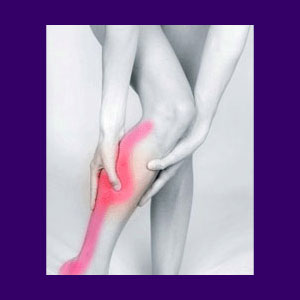
Sciatica symptoms vary greatly in their effects and intensity, but are always an unwelcome burden for any patient to bear. This is particularly true for symptoms which become chronic and may lead to extended periods of torturous suffering spanning months, years or decades.
In general, symptoms of sciatica will include pain, tingling, burning, weakness or numbness in the buttocks, legs, or feet. Sciatic nerve pain might affect one leg or both. It may affect one leg differently than the other or both the same. Some patients only have pain in the backs or sides of their legs. Some have pain in the tops or bottoms of their feet, as well. The pain might be chronic and nagging or might be acute and debilitating. The symptoms of sciatica are difficult to characterize universally, except to say that they are always unpleasant and sometimes downright nasty!
It is common for sciatica patients to experience variable degrees of pain or relief depending on posture, position, and activity. There does not seem to be a set pattern for these changes, since the conditions causing the pain vary from case to case. Sciatica is certainly one of the most diverse of all back pain expressions.
This narrative discusses the usual and atypical symptoms of sciatica that might present themselves in any particular patient.
Sciatica Symptoms Warning
If you experience bowel or bladder control problems or complete numbness in the buttocks or genitals (called saddle paresthesia), seek assistance immediately. These symptoms might be signs of cauda equina syndrome. This condition often requires immediate treatment or the nerve damage may become permanent.
Sciatica is sometimes an indicator that there is a problem somewhere in the lower back, sacroiliac joint or piriformis muscle. However, a less considered source of sciatica pain is simple ischemia of the sciatic nerve and surrounding musculature. This process is most often the result of a psychosomatic causation and can not generally be effectively treated using any physical medical treatment modality.
Remember that sciatica, itself, is a symptom, not a separate condition. There should never be a diagnosis of sciatica made, but instead the diagnosis should name and identify the specific reason for the sciatica to occur.
Symptoms of Sciatica
Sciatica is perhaps the most pervasive of all back pain conditions. It has a bad reputation as a long lasting disorder. Like many other forms of chronic back pain, sciatica is often mistakenly diagnosed as stemming from an innocent structural source, such as a herniated disc in the lower back. This occurs constantly, even though doctors have been warned over and over by the very medical associations which design diagnostic protocols not to implicate structural abnormalities unless definitive evidence of a pathological state exists.
Needless to say, most disc and bone irregularities in the lumbar area are not at all pathological, but are mostly coincidental to painful symptoms. This is a proven fact, so please research this truth on your own for greater insight.
How can any of the common back pain treatments work well if they are not focused on the true cause of pain? This question needs no answer, but the implied response goes a long way in explaining why so many patients endure such defiant and ongoing pain conditions.
To summarize this article about the symptoms of sciatica, here is my advice: Be sure to understand your diagnosis and get involved in learning more about whatever is deemed causative for the suffering you are experiencing. Once you know all about the condition, be sure to correlate your symptoms with a neurologist. This will help you to prevent the common misdiagnosis which holds so many patients back from finding real cures.




